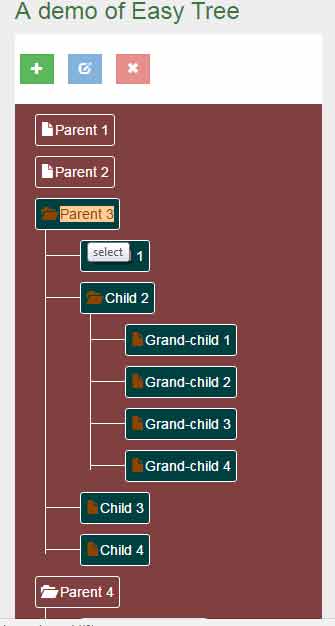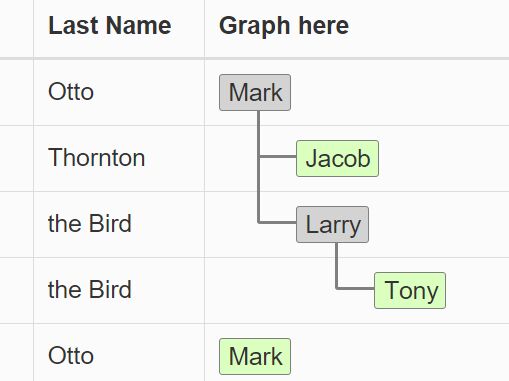

Protected virtual override Object SaveViewState() Protected virtual override void LoadViewState(Object savedState) Click on the arrow (s) to open or close the tree branches. Tree View A tree view represents a hierarchical view of information, where each item can have a number of subitems.
#Css treeview how to#
Here we override the TagKey to render Div as a container, and also expose the strongly typed Style class (CustomTreeStyle), implementation of which I left outĢ) You need to override the LoadViewState and SaveViewState of the treenode, so that the css is not lost at a postback (or any other property you add) as Learn how to create a tree view with CSS and JavaScript.
#Css treeview code#
your style properties and code goes here Return base.CreateControlStyle(ViewState)

Protected override Style CreateControlStyle() Protected override HtmlTextWriterTag TagKey Hi it's a nice article, maybe some suggestionsġ) Create your own TreeView (CustomTreeView ) something as below In the RenderPreText method, we write out a Div tag and add a class attribute, setting its value with the cssClass property.

Since we are changing the way the .WebControls.TreeNode Text property is being rendered, the first thing we need to do is to create a class that inherits TreeNode and override the RenderPreText and RenderPostText methods. Functionalities like adding custom attributes or properties to a node other then the node text and Value, a built-in data binding supporting auto-binding from a single self-referencing table with ID -> Parent ID relation, and adding a custom style or template to nodes or globally to a tree view.Īttributes and node customization are addressed in this article, and hopefully I will address auto-binding in a later article or at least give it a try! Customizing Tree Nodes There are lots of useful make-life-easy functionalities that the built-in ASP.NET TreeView control lacks that are very noticeable especially when you are working with third party components. The Image file name should be called “TreeView” and the CSS file name should be called “TreeView.MySkin”.Īlso, if you decide to do this, it is also required that you replace all the names of classes in your CSS file from “Customskin” to “Myskin”.Īnd it is also required that you change the path to the Myskin folder in the tool pane.This article will show how to extend the ASP.NET TreeView control to apply Cascading Style Sheets to tree nodes as well as add the functionality of storing custom attributes per node. If you decide not to use the default folder (Customskin), you need to create a new folder Myskin at the same level as the Customskin folder and copy the images file and the CSS file to the Myskin folder. If you do not use the default Customskin folder do the following: Description This is a treeview with custom checkboxes and indeterminate state created with HTML, CSS and JavaScript Are you want to create a Tree view file design using Bootstrap framework and CSS Treeview nodes can be activated by clicking on them The jQuery plugin that brings select elements into the 21st century with intuitive multiselection, searching. On the web part, the text color of the Tree menu is shown with red font. Upload the modified file to the CustomSkin folder. Stepĭownload TreeView.CustomSkin file that belongs to Tree Menu folder.Įdit CSS code using your CSS Editor or Notepad to change items such as text color. Signature: function (event: React.SyntheticEvent, nodeIds: array) > void. Callback fired when tree items are expanded/collapsed. Navigate to the Style library in the parent level of the site collection. When multiSelect is true this is an array of strings when false (default) a string. Add Navigators Tree Menu (not to be confused with Bamboo’s Tree View Menu web part) to the page or the site and configure it as needed.


 0 kommentar(er)
0 kommentar(er)
